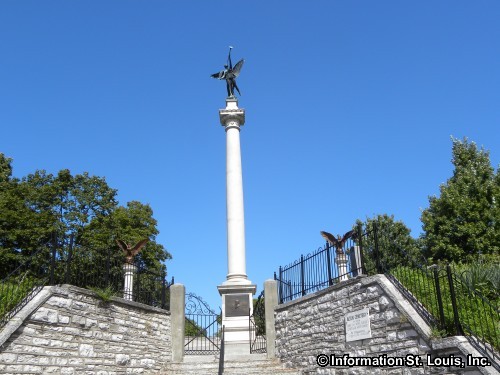Underground Railroad

The Underground Railroad was in operation for many years before and during the Civil War. Alton's Mississippi riverfront location in "free" Illinois, made it ideal for helping slaves escape to freedom from the slave state of Missouri and others in the south. Abolitionists and free blacks were "conductors" that helped slaves get from one "station" to the next. In fact, many slaves who gained their freedom by escaping to Illinois ended up in the African American community of Rocky Fork near Godfrey Illinois. Today, all that is left of the community is the Rocky Fork New Bethel AME Church that was founded in 1863.
Underground Railroad Sites
Although the Underground Railroad's activities were secret in nature and are now hard to document, several sites in Alton and the surrounding area have connections to the Underground Railroad. The Cheney Mansion, today the location of the Jersey County Historical Society in Jerseyville Illinois, was a stop on the Underground Railroad. The Lewis and Clark Community College Campus is said to have tunnels existing under the campus buildings that were used by conductors to aid slaves in gaining their freedom. Along the Mississippi River bank, just north of the Merchant Bridge in St. Louis Missouri, the Mary Meachum Freedom Crossing is located, one of the few documented Underground Railroad events in the United States. It is the site where Mary Meachum, a freed slave, was caught helping other slaves from St. Louis cross over the Mississippi River to gain their freedom in Illinois.
The Old Rock House in Alton was also a station on the Underground Railroad and it was where the Anti-Slavery Society was founded by Elijah P. Lovejoy, an abolitionist and martyr for the causes of freedom of speech and freedom from slavery. It can still be seen on College Avenue, across the street from the College Avenue Presbyterian Church where Lovejoy was the minister. Lyman Trumbull, a US Senator and friend to Abraham Lincoln, wrote the 13th Amendment which abolished slavery in the United States. His home can still be seen in Alton on Henry Street. The Alton Museum of History and Art has an exhibit featuring the Underground Railroad and displays a "message quilt" and another exhibit that features Elijah Lovejoy's printshop.
Elijah P. Lovejoy, Abolitionist
 Elijah Parish Lovejoy was a Presbyterian Minister, the editor of the Alton Observer, and a zealous abolitionist in 1837. From the pulpit and from the pages of his newspaper he adamantly argued for the right of freedom of speech, the freedom of the press and the freedom from slavery. After witnessing the burning at the stake of a slave, his articles became even more severe in his opposition to slavery. Several times angry pro-slavery mobs smashed his printing press. On the night of November 7, 1837, in Alton Illinois, Lovejoy and 20 of his supporters, tried to secretly take delivery of another printing press. The plan was found out and again an angry mob formed and smashed this printing press and threw it into the Mississippi River. Unfortunately, Elijah Lovejoy lost his life trying to protect his press that night. Elijah Parish Lovejoy was buried in the Alton Cemetery in an unmarked grave. Sixty years later he was re-interred and the Elijah P. Lovejoy Monument was erected as a memorial to Lovejoy and his advocacy of freedom of speech and the ending of slavery.
Elijah Parish Lovejoy was a Presbyterian Minister, the editor of the Alton Observer, and a zealous abolitionist in 1837. From the pulpit and from the pages of his newspaper he adamantly argued for the right of freedom of speech, the freedom of the press and the freedom from slavery. After witnessing the burning at the stake of a slave, his articles became even more severe in his opposition to slavery. Several times angry pro-slavery mobs smashed his printing press. On the night of November 7, 1837, in Alton Illinois, Lovejoy and 20 of his supporters, tried to secretly take delivery of another printing press. The plan was found out and again an angry mob formed and smashed this printing press and threw it into the Mississippi River. Unfortunately, Elijah Lovejoy lost his life trying to protect his press that night. Elijah Parish Lovejoy was buried in the Alton Cemetery in an unmarked grave. Sixty years later he was re-interred and the Elijah P. Lovejoy Monument was erected as a memorial to Lovejoy and his advocacy of freedom of speech and the ending of slavery.
Hey There! Do You Know What Your Home Is Worth Today?
Check Here Now!Events in St Louis History
Have You Considered A Career In Real Estate?
Learn MORE Here!St Louis Missouri Real Estate For Sale
New Construction For Sale: 1320
Condos For Sale: 697
Commercial For Sale: 1799
Acreage For Sale: 1263
Multi-Family 5+ For Sale: 103
Multi-Family 2-4 For Sale: 444
Lots For Sale: 3089
Total Properties For Sale: 18240










